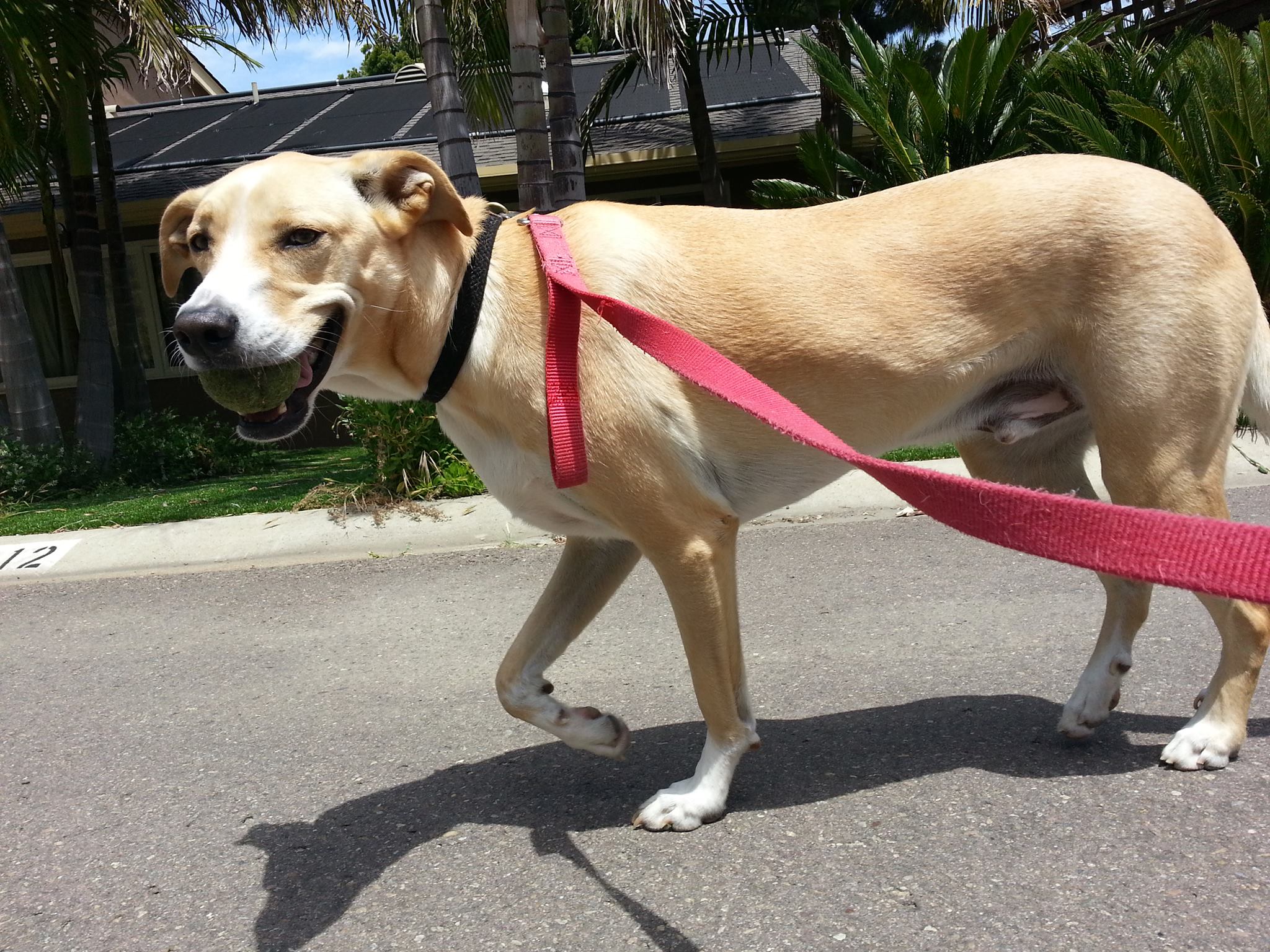A collar and leash on a dog seems so natural and most people wouldn't think twice about just throwing a collar on a puppy and pulling them out the door on a leash. However, it's important to remember that a collar and leash is far from natural for a dog to wear. Take both of your hands right now and tighten it around your neck, then try to push your head forward against your hands as if pulling against a leash. Notice how a little panic starts to set in when you feel like you can't breathe. Next, put a rope around your neck, or if you're really brave, a metal prong collar and a leash. Then ask a friend to lead you around wherever she wants to go. Next, walk past a bear that's on the loose, or better yet someone who's running at you with a knife and try to pull away from the leash. Not fun to be scared and choked at the same time with no where to run, eh?

Some would say that I'm anthropomorphizing this scenario, but all I'm trying to do is put you in your dog's shoes, or paws, for a second. It makes me absolutely cringe to see people wildly yanking on leashes and dragging their dog around without proper cues or consistent directions.The key to a well behaved dog on a leash is to also be a well behaved human. Be consistent about which side you want your dog to walk on, hold the leash at the same length for walking in a heel position and let the leash out to the end when releasing your dog for a sniff and pee break. Teach your dog the heel command without a leash in your home at first by leading him around with a treat held by your side. Then introduce the leash in your home and each and every time your dog pulls, come a dead stop and wait till your dog takes the tension off and then move forward. Once your dog is understanding the concept of a loose leash and the heel command, start working outside with the same consistency and patience. Teach your dog to follow you by switching directions often. Teach your dog to give you attention when he is startled by a stimulus or when he is nervous around other dogs. Use the kissy noise, or a cue like "this way" when you want to switch directions or "wait" when you want to come to a stop.
Whatever you do, avoid a never ending game of tug-of-war and if you don't want your dog to pull on the leash, show him the same respect by not pulling on him. Think of the leash merely as a safety device, in fact, just wrap it around your waist if the habit to pull is so deeply engrained. Imagine in your head an invisible loose leash and use your signals with your voice, hands and body to convey that there is an invisible wall that extends from your side that your dog must not cross. Leave your phone at home or in your pocket when you take your dog for a walk. Majority of dogs, will take advantage of their human being distracted and will pull or lunge like crazy when their human is talking on the phone. It may take a long time to break the habit of pulling, but the proper tools, a lot of patience and a lot of understanding will have you well on the way to enjoying walks with your best friend again. We're here for you if you'd like to learn how to make walks fun again!

